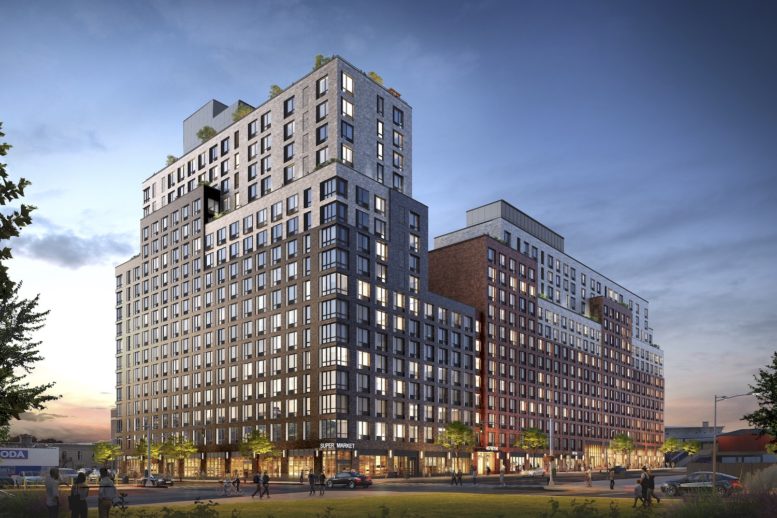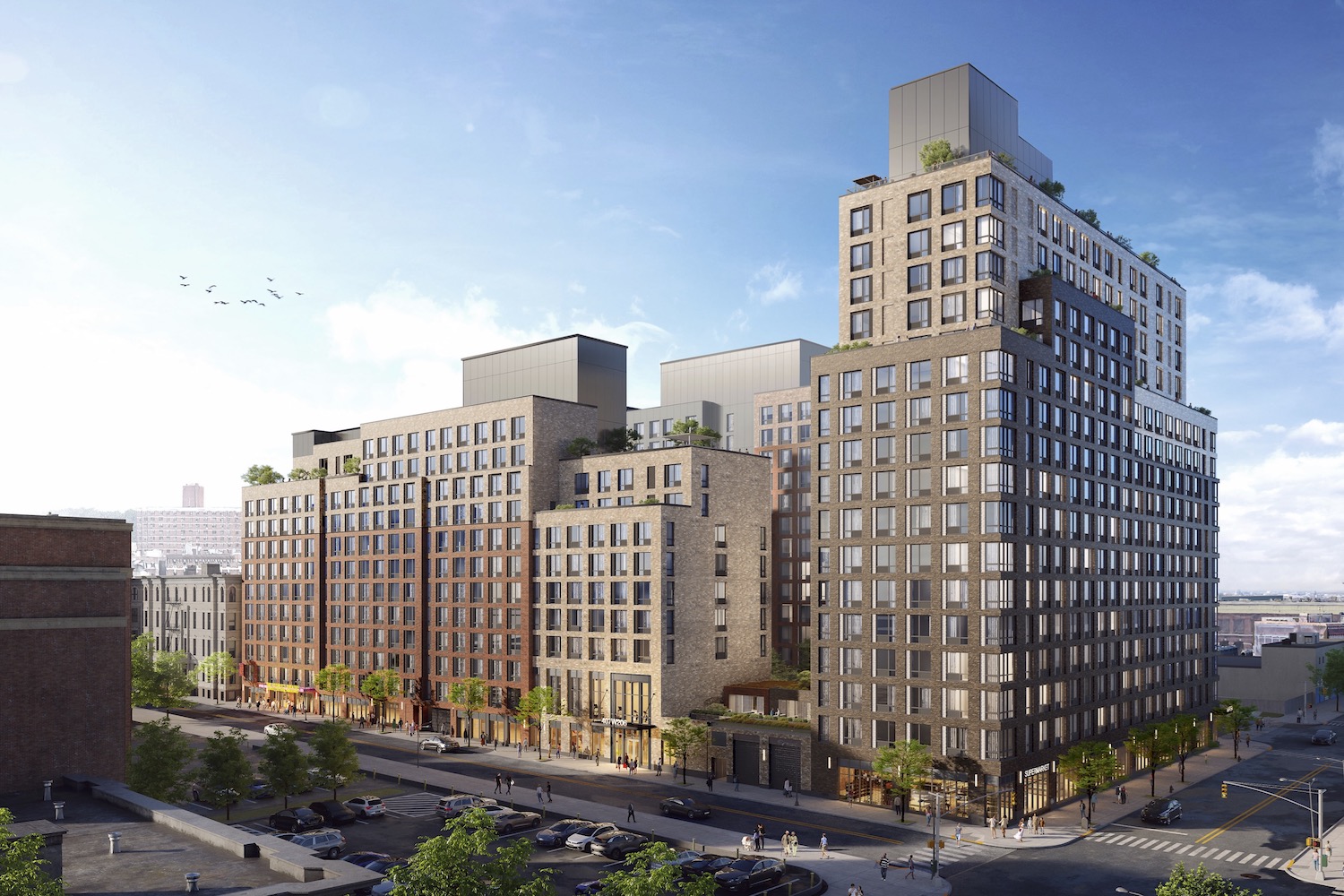Council also passed legislation to ban discrimination based on a person’s height and weight, and packages of housing and education bills
The New York City Council approved legislation to establish population review programs that determine whether people detained in city jails can have their cases resolved or be released into community programs to reduce unnecessary incarceration that inflate the city’s jail population. The bill is an important measure to help efforts towards the successful closure of Rikers Island jails. Another bill required annual reports on medical care and outcomes for incarcerated pregnant individuals. The Council also voted on legislation that would prohibit discrimination in employment, housing and public accommodations based on a person’s height and weight. There were also housing- and education-related bills passed at the Council’s Stated Meeting.
“It’s abundantly clear that Rikers is undermining public safety for New York City,” said Speaker Adrienne Adams. “We cannot allow Rikers to remain open past its legally mandated deadline, and the City must take active steps to ensure we move forward in a timely fashion. Today’s legislation is another step to help address the issues in our jail system and move us towards an effective one. I thank my Council colleagues for their support on this critical legislation.”
Solutions to Problems in City’s Criminal Justice & Jail Systems
Introduction 806-A, sponsored by Council Member Carlina Rivera, would require the establishment of a jail population review program to identify people in custody of the Department of Correction (“DOC”) whose cases could be resolved or who could be safely released into community-based programs.
Introduction 589-A, sponsored by Council Member Carlina Rivera, would require the Department of Correction (DOC), in consultation with relevant agencies, to submit an annual report on incarcerated pregnant individuals’ medical care and outcomes. This report includes specific information on the number of pregnant persons in custody, prenatal and postnatal care and maternal mortality data.
Resolution 156-A, sponsored by Council Member Carlina Rivera, calls on the State legislature to pass and the Governor to sign the Treatment Not Jails Act. The state legislation would expand eligibility for court-involved individuals to receive treatment for mental illness and substance abuse, rather than be sent further into the criminal justice system
“Pregnant women should not be in jail, and those who are incarcerated must be treated with dignity and respect, and the City must be held accountable for their treatment and wellbeing,” said Council Member Carlina Rivera. “I’m proud to be passing legislation today that will make sure this population with unique health needs — including women with higher rates of trauma and mental illness — are getting the proper care while in custody, prior to, during and after childbirth. We must dramatically reduce the number of women who are incarcerated and increase available programs and neighborhood based treatment and support to protect our communities.”
Banning Discrimination Based on a Person’s Height or Weight
Introduction 209-A, sponsored by Council Member Shaun Abreu, would amend the New York City Human Rights Law (HRL) to prohibit discrimination in employment, housing, and public accommodations on the basis of a person’s height or weight.
“There is a glaring absence in New York City’s Human Rights Law: protections against height and weight discrimination, which affected 2 million New Yorkers alone in 2019. Size discrimination is a social justice issue and a public health threat. People with different body types are not only denied jobs and promotions that they deserve, but their whole existence has also been denied by a society that offers no legal remedy for this rampant prejudice,” said Council Member Shaun Abreu. “I am so proud that our city is finally taking action and leading the fight for size freedom and body positivity. Thanks to the advocates, labor organizations, and medical experts who united behind this cause, New York City will now be the most populous municipality in the world to ban size discrimination. It is my hope that other cities and states — and one day the federal government — will follow our lead. Our diversity only makes us stronger.”
Protecting Tenants and Enforcing Housing Regulations
Introduction 434-A, sponsored by Council Member Pierina Sanchez,will expand the Heat Sensors Program, which was established in 2020 as an additional tool for enforcing the Housing Maintenance Code. Under the Heat Sensors Program, the Department of Housing Preservation and Development (HPD) selects 50 multifamily buildings, aimed at targeting the worst offenders, to install heat sensors in the living room of every apartment in the selected buildings. The devices help monitor indoor temperatures to ensure that property owners are complying with the Housing Maintenance Code’s requirements to maintain certain indoor temperatures during heat season, which runs from October 1st to May 31st. This bill expands the number of participating buildings selected, refines the selection criteria for identifying participating buildings, improves notice to tenants, and increases HPD’s inspection requirements.
Introduction 875-B, sponsored by Council Member Pierina Sanchez, will amend the city’s administrative code, the city’s plumbing code, the New York City building code, the New York city mechanical code and the New York city fuel gas code, in relation to technical corrections, clarifications and modifications to provisions of the New York city construction codes.
“Today’s passage of these bills marks a crucial step in our ongoing efforts to protect tenants, crack down on the worst landlords in order to preserve affordable housing, and ensure the safety of all New Yorkers. By expanding the Heat Sensor Program, we are taking a critical step towards improving housing quality and keeping New Yorkers safe in their homes. As it gets warmer outside, we must prepare for the next cold season. No one should have to choose between their safety and their comfort, sufficient heat must be provided safely by landlords, and with this expansion, we are doubling our efforts to hold bad actors accountable for denying tenants basic rights. Additionally, the technical corrections and modifications in Introduction 875-B will help ensure that our city’s construction codes are up-to-date and effective in protecting the health and safety of all New Yorkers while also advancing our commitment to combat climate change. I am proud to support these bills and their positive impact on our city,” said Council Member Pierina Sanchez.
Introduction 583-A, sponsored by Public Advocate Jumaane Williams, will increase penalties for violations issued by the Department of Housing preservation and Development, and requires HPD to maintain a certification of correction watch list. Any listed landlord on this watch list would be prohibited from certifying correction of violations in multiple dwellings, unless HPD has attempted at least two re-inspections, or those violations are excluded from the calculations that identify buildings on the watch list.
“Last year’s Worst Landlord Watchlist saw the most violations in its history as buildings deteriorate and rents rise under landlords who put profit over people,” said Public Advocate Jumaane Williams. “They exploit loopholes to shamelessly dodge accountability and avoid repairs, while tenants suffer. Passing this Worst Landlord law will prevent the worst owners in the city from self-certifying repairs that haven’t been made and increase penalties for failing to fix violations so that fines aren’t just part of the cost of doing business. Our list is designed in part to shame the worst landlords in the city — but for owners who are shameless in their negligence, this law will hold them to account and deliver relief to countless tenants facing unlivable conditions.”
Increasing Transparency at the Department of Education
Introduction 644, sponsored by Council Member Nantasha Williams, would require the Department of Education (DOE) to post information on its website informing people on how to establish afterschool programs.
“The Department of Education plays a crucial role in promoting educational opportunities beyond the regular school day,” said Council Member Nantasha Williams. “With Int. 644-A, accessible information on program setup will equip communities with the necessary tools to address the growing need for quality after-school options, promoting equity and enhancing educational outcomes for all learners.”
Introduction 868, sponsored by Council Member Althea Stevens, would require the DOE to report annually on the number of students in each building that provides a District 75 program, and the criteria the DOE uses to determine where D75 programs are established.
“This piece of legislation is an investment to our students on the back end, in addition to what is required to improve transparency and provide adequate information to guarantee the success of students of our District 75 programs,” said Council Member Althea Stevens. “Equity and accessibility are important, especially when we talk about our children’s education. One day, they will be filling the shoes that all of us walk in and will make historical strides, but first, as a city, we must ensure that we are providing our students with the tools and necessary support needed and that all starts with efficient data.”
Introduction 725, sponsored by Council Member Linda Lee, would require the DOE to create a centralized website to allow schools to list their surplus school supplies for other schools to claim.
“If we are to ensure that the next generation has the opportunities to succeed and thrive, we must provide the tools and resources necessary to facilitate quality educational experiences for every child in New York City,” said Council Member Linda Lee, Chair of the Committee on Mental Health Disabilities and Addictions. “Int. 725 will create a much-needed platform for school administrators to post surplus supplies to initiate exchanges, allowing enhanced communication to save precious resources, boost efficiency, and mitigate waste across public schools. Thank you, Speaker Adrienne Adams, Chair Rita Joseph, and my City Council colleagues, for your leadership and support in this effort for our students.”
Land Use
23-10 Queens Plaza South – will facilitate an enlargement of an existing 4-story building, which will result in a 26–story commercial building that will include office, retail and community facility uses in Council Member Won’s district.
2560 Boston Road Rezoning – will facilitate a new 9-story, mixed-use development, including approximately 333 affordable housing units, 15,000 square feet supermarket, 6,750 square feet community facility space and approximately 117 parking spaces in Council Member Velázquez’s district.
The Coordinated Street Furniture Franchise Agreement – a Department of Transportation (DOT) request for the Council’s support in amending and extending the current 20-year agreement to a 25-year team with franchisee JCDecaux, to facilitate the expansion of bus shelters and automated public toilet installations citywide.
Finance
· Transparency Resolution: Approving new designations and changes of certain organizations receiving funding in the Expense Budget.
· Pre-considered Resolution: Amending a previously granted tax exemption for one building in the Lower East Side in Council Member Carlina Rivera’s district.
· Pre-considered Resolution: Authorizing an Article XI exemption for one building in Bedford-Stuyvesant, in Council Member Chi Ossé’s district.
· Pre-considered Resolution: Authorizing an Article XI exemption for two buildings in Corona, in Council Member Francisco Moya’s district.
· Pre-considered Resolution: Authorizing an Article XI exemption for one building in Bushwick, in Council Member Sandy Nurse’s district.
· Pre-considered Resolution: Authorizing an Article V exemption for one building in Kips Bay, in Council Member Carlina Rivera’s district.
· Pre-considered Resolution: Authorizing an Article XI exemption for one building in Bedford-Stuyvesant, in Council Member Chi Ossé’s district.










